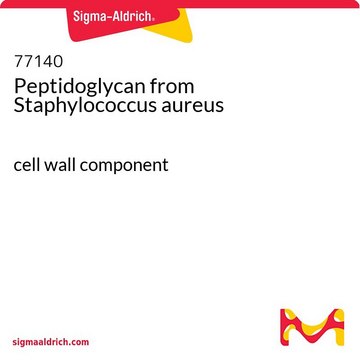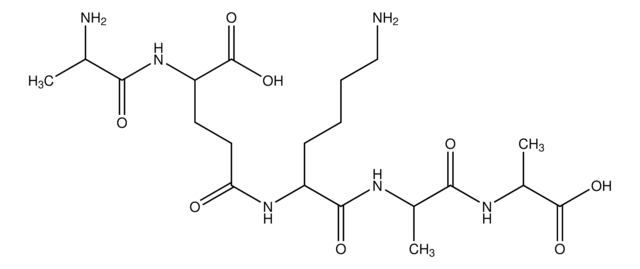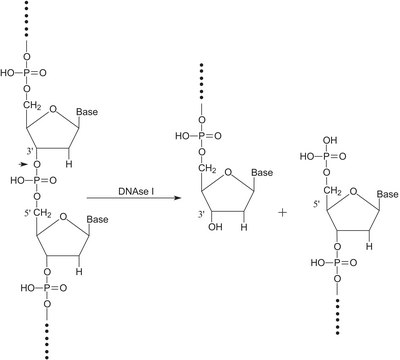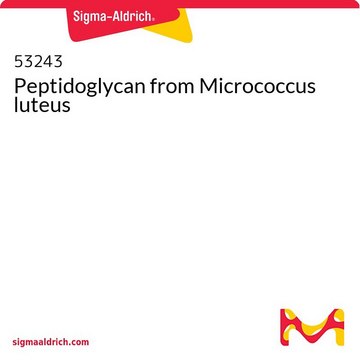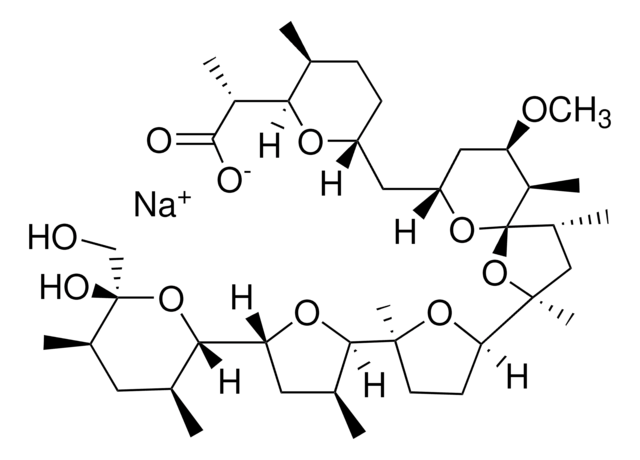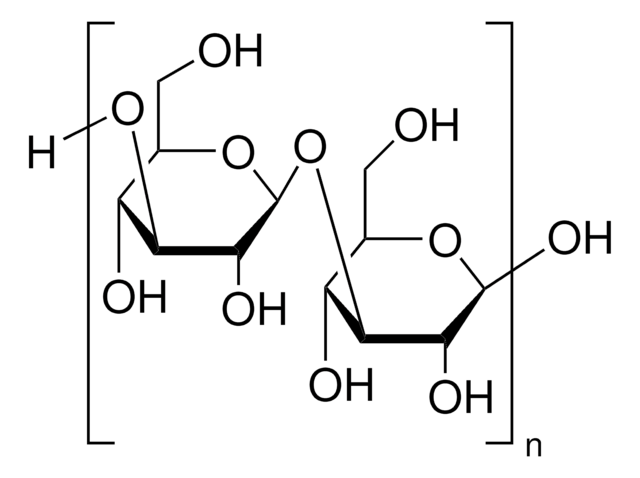72789
Peptidoglycan from Saccharomyces cerevisiae
Synonym(s):
PGN
Sign Into View Organizational & Contract Pricing
All Photos(1)
About This Item
Recommended Products
biological source
Saccharomyces cerevisiae
form
powder
color
beige
storage temp.
−20°C
Application
Peptidoglycans are major components of bacterial cell walls, especially of gram-positve bacteria. Peptidoglycan are composed of alternating residues of β-(1,4) linked N-acetylglucosamine and N-acetylmuramic acid and peptide chains that create cross-linkage to create mesh structures. Peptidoglycans from different bacterial species can be compared to determine structural and compositional differences/variations and phylogenetic evolution. Peptidoglycans from different species may be used to differentiate and characterize peptidoglycan hydrolases.
Other Notes
To gain a comprehensive understanding of our extensive range of Polysaccharides for your research, we encourage you to visit our Carbohydrates Category page.
Storage Class Code
11 - Combustible Solids
WGK
WGK 3
Flash Point(F)
Not applicable
Flash Point(C)
Not applicable
Personal Protective Equipment
dust mask type N95 (US), Eyeshields, Gloves
Choose from one of the most recent versions:
Certificates of Analysis (COA)
Lot/Batch Number
Don't see the Right Version?
If you require a particular version, you can look up a specific certificate by the Lot or Batch number.
Already Own This Product?
Find documentation for the products that you have recently purchased in the Document Library.
Prunelle Waldman et al.
Environmental science & technology, 51(23), 13633-13640 (2017-11-09)
Although the interaction between phages and bacteria has already been well described, it only recently emerged that human viruses also interact with bacteria in the mammalian gut. We studied whether this interaction could occur in tap water and thus confer
Wendy J van Zuylen et al.
PloS one, 6(1), e15723-e15723 (2011-01-21)
The ten mouse and six human members of the Schlafen (Slfn) gene family all contain an AAA domain. Little is known of their function, but previous studies suggest roles in immune cell development. In this report, we assessed Slfn regulation
Articles
Peptidoglycan structure: alternating GlcNAc and N-acetylmuramic acid cross-linked to peptides form the basic backbone.
Our team of scientists has experience in all areas of research including Life Science, Material Science, Chemical Synthesis, Chromatography, Analytical and many others.
Contact Technical Service
